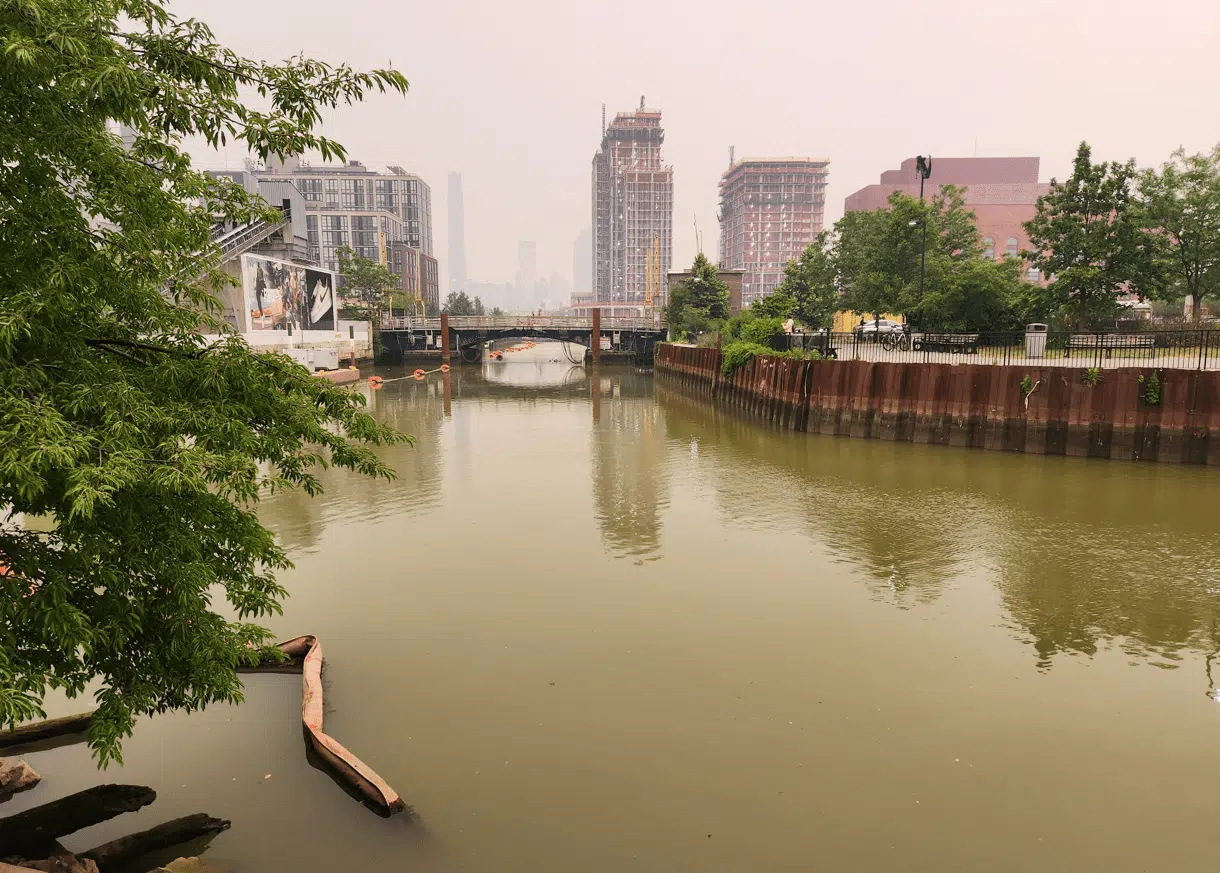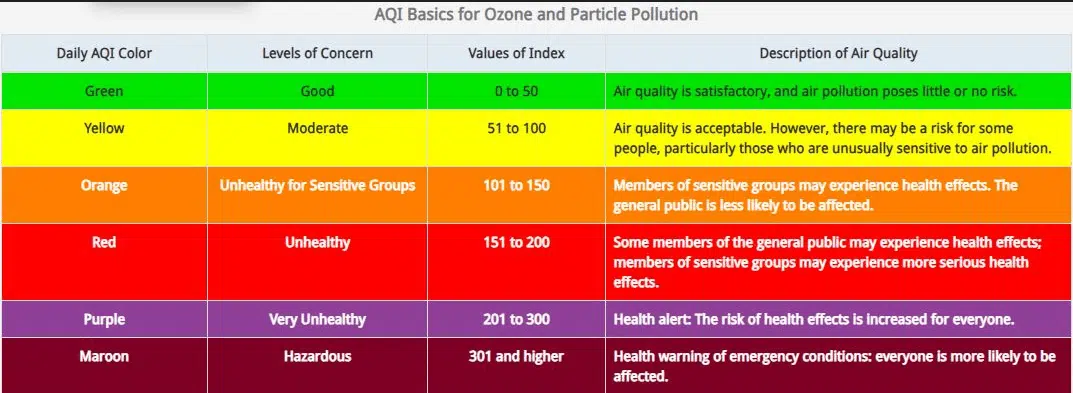Protecting Older Adults from Wildfire Smoke and Poor Air Quality
The ongoing Canadian wildfires caused a significant drop in air quality across much of the United States last week, casting an orange haze over much of the country and resulting in numerous public health advisories.
While this event came as a surprise to many, continued climate change means events like those of the past week are likely to happen more frequently.
The following blog seeks to help prepare our community by explaining who is most vulnerable to poor air quality, how to mitigate these risks, and how to stay informed about future air quality incidents. 
What is the Air Quality Index?
The Air Quality Index (AQI) is a measurement made by the Environmental Protection Agency and state environmental agencies to determine the amount of pollution in the air at any given time. Pollutants monitored with this system include ozone, fine particulates, carbon monoxide, sulfur dioxide, nitrogen oxides, and methane/non-methane hydrocarbons.

The AQI has six levels of severity, and any AQI score over 100 can begin to present hazards to vulnerable individuals and come with advisements to limit outdoor activity. Last week’s AQI in New York City ranged from a low of 22 (“Good”) on Monday to a high of 247 (“Very Unhealthy”) late Tuesday.
Who is at risk when the local AQI is high?
The most recent Canadian Wildfires spiked AQI numbers due to a large amount of fine particulate matter released into the air. Fine particulates are smaller than most other pollutants and pose a higher health risk because they tend to rest deeper within lung tissue and can even enter a person’s bloodstream.
Individuals under the age of 18 or over the age of 65 are more at risk of health complications when the AQI creeps over 100, as well as those with cardiovascular disease (i.e. congestive heart failure, history of prior heart attack) or lung disease (i.e. asthma, chronic obstructive pulmonary disease.)
How do I monitor local AQI?
Monitoring local AQI is the key to making informed decisions. The most straightforward AQI assessment can be found at AirNow.gov, which provides current air quality ratings and predictions for the following day.
If you wish to plan ahead a bit further, the Beijing Air Pollution Tracker website provides more extended forecasts, as well as reports from all AQI testing stations, allowing for more precise local forecasts.
How do I protect myself and loved ones during elevated AQI levels?
The best way to prevent negative health effects when air quality is poor is to simply stay inside with your windows closed and limit any strenuous outdoor activity. If you are obligated to go outside when the AQI is high, the New York State Department of Health recommends using an N95 or KN95 face mask to lower your overall exposure.
While this advice is useful during periods where the AQI is slightly elevated, there are additional steps you can take during extreme circumstances (i.e. an AQI around 150 or higher,) or if you or a loved one has a health condition that creates higher risk.
- Make sure to close all windows in your home to limit the entry of new particulate matter.
- If your windows have significant gaps, temporarily sealing them with duct tape can further insulate your home.
- Many modern air conditioners have the option to either recirculate air already in the home or bring in new air. During high AQI periods, it is best to set these units to recirculate.
- Any in-home exhaust fan like those in hoods over stovetops should be used sparingly, if at all, as these will create a pressure change that will pull in more outside air.
- Many apartment bathrooms have exhaust vents meant to reduce water condensation. These can be temporarily blocked with a sheet of plastic wrap.
- Consider investing in an air purifier with an MERV rating of 13 or higher, which will be able to capture small particulate matter.
If you or a loved one are bedbound, have limited mobility, or are particularly sensitive to poor air quality, it may be wise to establish a “clean room” in your home. This area should be sealed off from the remainder of your home and be free of indoor sources of air pollution, like an oven or fireplace.
A clean room limits the amount of space your air purifier will need to manage, ensuring you have access to the cleanest air possible.
Keep in mind that if you take steps to seal your home, you should closely monitor AQI forecasts and take advantage of periods of better air quality, opening your windows and allowing in fresh air when it is safe to do so.
SelectCare has helped New York families overcome challenges great and small for nearly 40 years, and our emergency planning, communication, and support systems have helped our clients remain safe in a variety of emergency scenarios.
To learn more about SelectCare and how we help, contact SelectCare today or request a free in-home care guide.
Contact us any time, 24/7 with any questions, or to request a free in-home evaluation.